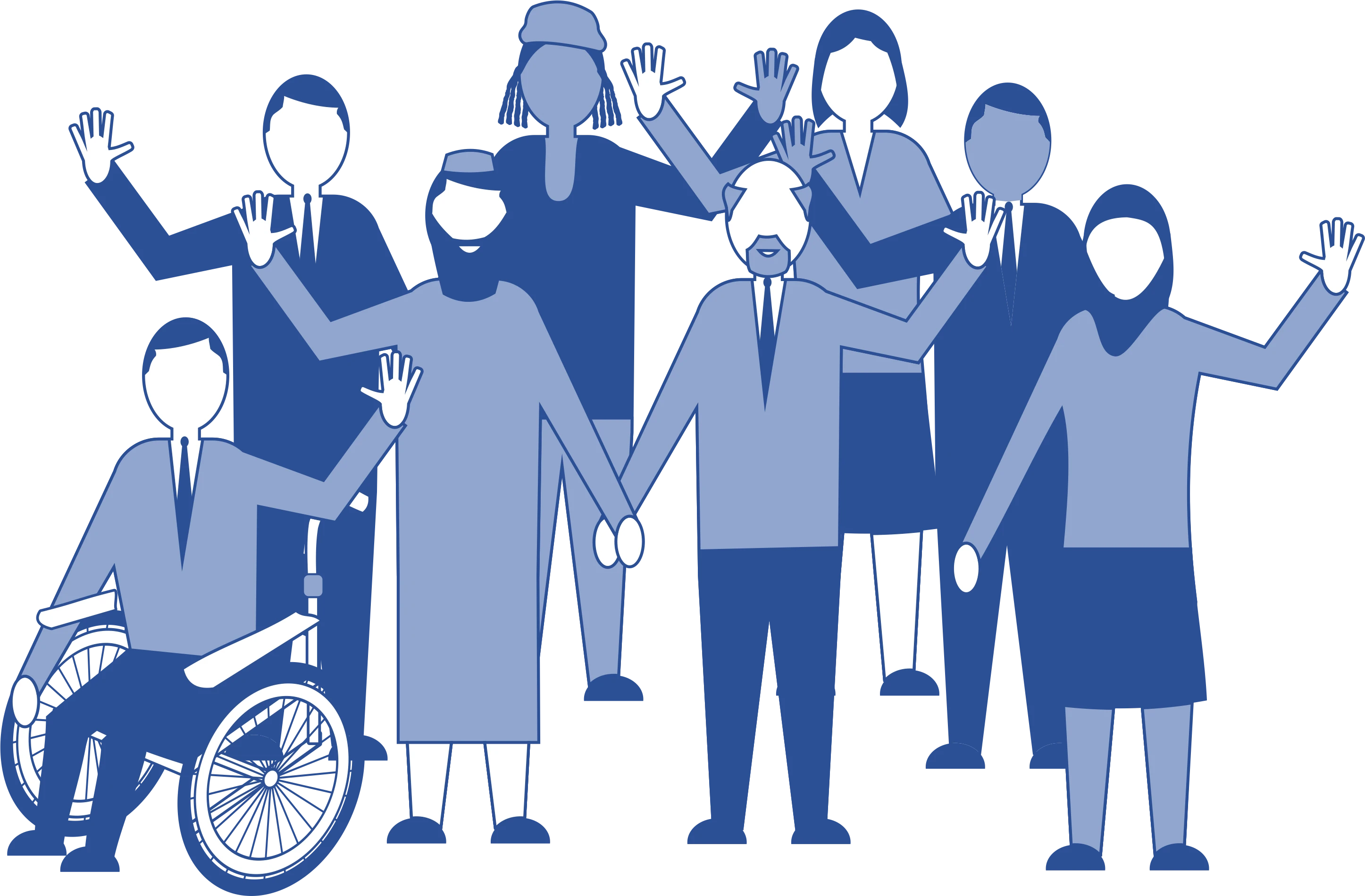Understanding Cultural Awareness
Cultural awareness, or competence, is crucial for successfully interacting with diverse cultures. Intercultural sensitivity helps us understand and adapt to differences. Healthcare professionals and first aid responders can use cultural sensitivity to provide inclusive care to diverse populations.
The NHS constitution for England sets out that patients:
"have the right not to be unlawfully discriminated against in the provision of NHS services including on grounds of gender, race, disability, age, sexual orientation, religion, belief, gender reassignment, pregnancy and maternity or marital or civil partnership status."
Understanding those who have a different point of view improves cultural awareness and helps healthcare workers achieve the above standard. The quality of care is improved when the values of other cultures are respected.
Defining Cultural Competence
Cultural competence means understanding, respecting and adapting to the beliefs of people from different backgrounds. It also includes learning to communicate well and provide care compatible with other cultures.
Recognising differences and empathising can help us connect with people from diverse cultures. Healthcare workers and first aiders who improve their cultural competence can give better care to patients.
Cultural Sensitivity Meaning in Patient Care
Cultural sensitivity is essential in healthcare and first aid. Respecting patients' cultural values and adapting care to their needs helps build trust and improve health outcomes.
Cultural Aspects
Factors can include:
- language,
- communication styles,
- clothing and modesty values,
- religious practices, and
- dietary preferences.
How Can Healthcare Workers Show Respect for Cultural Backgrounds?
Healthcare workers can respect differences by:
- actively listening to patients,
- acknowledging and valuing their beliefs and practices,
- using nonverbal communication cues effectively, and
- promoting inclusivity, diversity, and human rights in healthcare settings.
Examples of Culturally Appropriate Care
Examples of Culturally Appropriate Care include:
1. Providing interpretation services for patients who speak different languages.
When sharing essential information with individuals who speak a different language, you may need the services of an interpreter. While some prefer to rely on family members for assistance, this may only be appropriate in some situations. Family members are not trained interpreters and may have conflicts of interest.
2. Offering religious accommodations.
Ask individuals how they want to practise their religion in practical ways. There are many variations within religions. Contacting their local priest or religious leader can significantly impact someone's well-being. A priest or religious leader may also be able to provide you with advice. They may inform you of practical steps you might take to help the person with their daily religious or spiritual practice.
For example, practising Muslims may want to get up early to worship. They may also prefer a designated prayer space.
3. Respecting dietary restrictions and preferences when planning meals for patients.
When it comes to eating and drinking, we all have different preferences. Be curious, ask questions and don't make assumptions.
If someone eats Kosher or Halal, you may need to cook their meal differently to prevent cross-contamination. They may need reassurance about this before they are willing to eat. Some people may prefer to eat with their hands rather than cutlery.
4. Understanding cultural taboos related to touch or eye contact and adjusting behaviour accordingly.
Body Language and the importance of personal space differ from culture to culture. For example, physical touch is an important aspect of social interaction in the Middle East, Latin America, and southern Europe. In much of the Arab world, males greet one other by holding hands and kissing, but they would never do so with a woman. Also, in Thailand, touching anyone's head, even children, is considered taboo.
In most Western cultures, eye contact demonstrates confidence and attentiveness. In many Middle Eastern countries, same-gender eye contact is more persistent and strong than the Western norm. In certain nations, eye contact between sexes is considered unwelcome.
In many African, Latin American and Asian cultures, however, maintaining unbroken eye contact is considered aggressive and confrontational.
5. Incorporating traditional healing practices when appropriate and safe alongside conventional treatments.
Traditional healing approaches can differ significantly from current techniques. Try to show an understanding of other cultures and their approach to health. Respect and acknowledge any traditional healing practices or therapies the individual or community prefers.
Inquire whether any special rituals or interventions besides first aid procedures should be explored. Collaborate with local healers or traditional medicine practitioners if necessary.
Real-World Challenges for Cultural Competence in Healthcare and First Aid
Providing culturally competent care comes with its challenges. Healthcare professionals must navigate cultural preferences and beliefs that differ from their own. Understanding patients' backgrounds and experiences is essential for meeting their care needs.
Examples of Cultural Misunderstandings
Misunderstandings occur when healthcare professionals and patients have different cultural norms, expectations, and communication styles. These misunderstandings can lead to misinterpretations, conflicts, and compromised patient care. Here are a few examples:
- Miscommunication due to language barriers or dialect differences.
- Misunderstanding of nonverbal cues and gestures.
- Lack of awareness of cultural practices and taboos.
- Stereotyping and biases based on culture.
Health workers and first aid providers must listen well, ask questions, and remain respectful to prevent misunderstandings. They should also consider body language, use translators, and honour customs.
Examples: The Impact of Cultural Insensitivity
Cultural insensitivity in healthcare settings can significantly impact patient trust, satisfaction, and outcomes. Here are some examples of how cultural insensitivity can affect patient care:
- Discrimination or bias based on background leads to unequal healthcare access.
- Lack of respect for beliefs and practices makes patients feel excluded or disrespected.
- Failure to provide culturally appropriate care results in ineffective treatment outcomes.
- Misunderstanding of cultural norms and expectations leads to miscommunication and mistrust.
How to Handle Misunderstandings Due to Cultural Differences?
Handling misunderstandings due to differences requires intercultural sensitivity and effective communication skills. Healthcare professionals should empathise, listen to different perspectives, and seek clarification. Employing conflict resolution strategies to promote understanding and cooperation may be beneficial.
Implementing Cultural Appropriateness in Healthcare Settings and First Aid Situations
Implementing cultural sensitivity for healthcare workers and first aiders requires care providers to work together. Here are some key points:
- Develop cultural sensitivity skills through training programs and workshops.
- Create a mission statement that emphasises the importance of cultural competence and sensitivity.
- Foster an inclusive and diverse work environment that values differences.
- Encourage open communication and cultural awareness among team members.
- Seek feedback from patients and incorporate their perspectives into healthcare practices.
Overcoming Barriers to Culture Sensitivity
Overcoming barriers to culturally sensitive care requires healthcare professionals and first aiders to address various challenges. Here are some strategies to consider:
- Improve language access and communication. Provide interpreter services or use language tools and resources.
- Enhance understanding through cultural competency training and education.
- Use clear and straightforward language, avoid jargon, and adapt communication styles to individual needs.
- Develop cultural sensitivity guidelines and protocols to ensure consistent and respectful care.
- Work with community organisations and mediators to bridge gaps in understanding.
The Benefits of Culturally Appropriate Healthcare and First Aid
Culturally appropriate healthcare and first aid benefits patients and healthcare providers. Here are some key advantages:
- Improved patient outcomes and satisfaction: Culturally appropriate care addresses patients' unique needs and values, improving health outcomes and increasing patient satisfaction.
- Enhanced patient-provider communication: By understanding and respecting differences, healthcare providers can establish trust, foster effective communication, and build strong relationships with patients.
- Reduced healthcare disparities: Culturally appropriate care helps reduce disparities by ensuring equitable access to healthcare services and resources for individuals from diverse backgrounds.
- Improved patient satisfaction: When patients feel understood, respected, and supported in their beliefs and values, they are more likely to be satisfied with their care experience.
- Enhanced trust and rapport: Culturally appropriate care helps build confidence and strong patient-provider relationships, leading to better communication, collaboration, and shared decision-making.
- Increased healthcare provider satisfaction: Healthcare providers who practice culturally appropriate care report higher job satisfaction and fulfilment because they provide patient-centred care.
Conclusion
Cultural understanding is crucial in healthcare, from first aid to long-term care. Healthcare workers can help patients by respecting different cultures. Recognising the role of traditional healing and alternative medicine with respect can benefit both patients and providers. It's important to overcome cultural barriers to improve trust and care outcomes. Training in cultural sensitivity, showing empathy, and improving communication help create inclusive environments. This helps patients feel supported and improves patient well-being.


